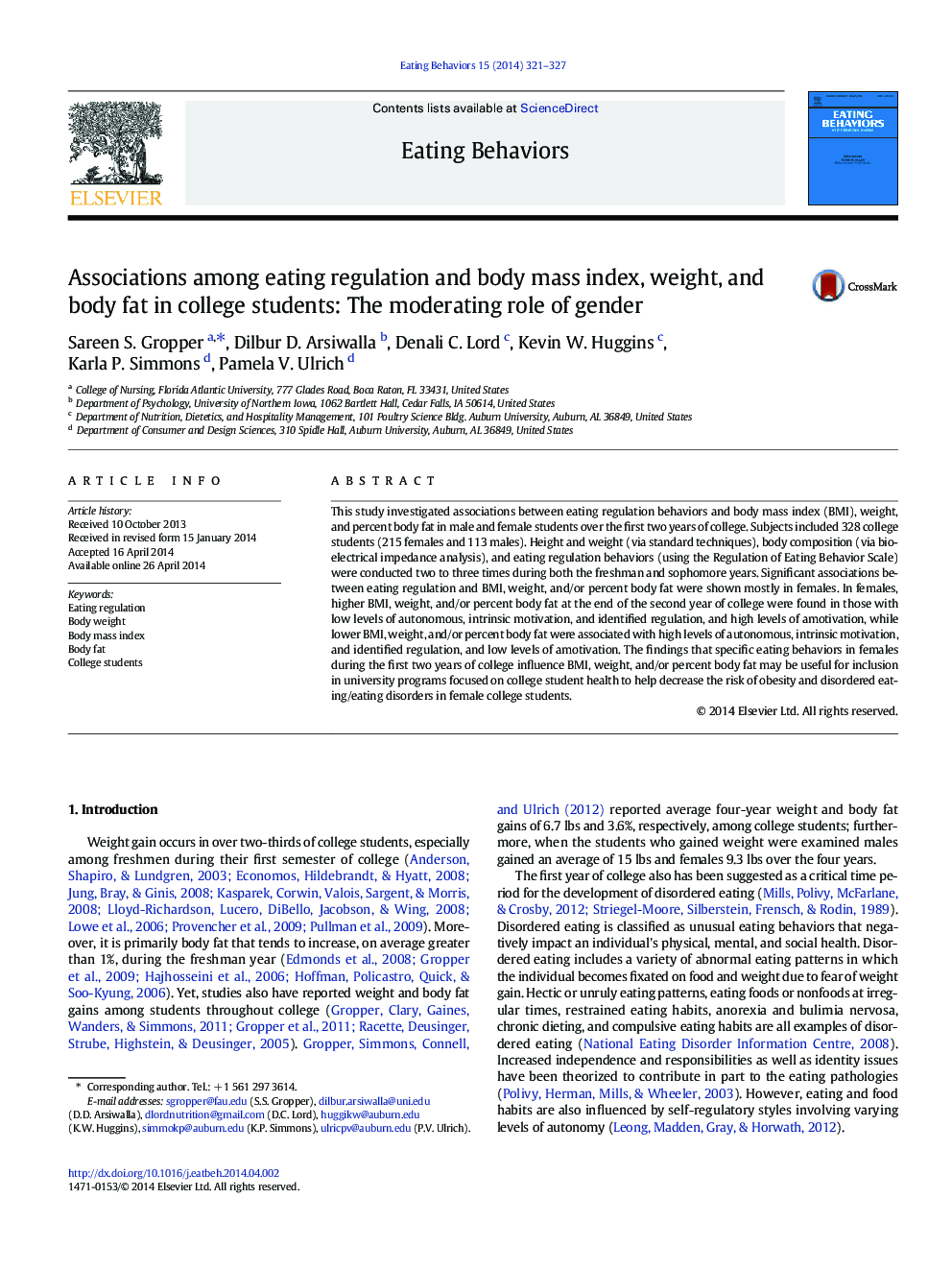| Article ID | Journal | Published Year | Pages | File Type |
|---|---|---|---|---|
| 906503 | Eating Behaviors | 2014 | 7 Pages |
•Higher BMI, weight or body fat was associated with low autonomous eating regulation.•Higher BMI, weight or body fat was also associated with high amotivation in females.•In males, high introjected eating regulation was associated with higher BMI.•In males, higher body fat was associated high amotivation.
This study investigated associations between eating regulation behaviors and body mass index (BMI), weight, and percent body fat in male and female students over the first two years of college. Subjects included 328 college students (215 females and 113 males). Height and weight (via standard techniques), body composition (via bioelectrical impedance analysis), and eating regulation behaviors (using the Regulation of Eating Behavior Scale) were conducted two to three times during both the freshman and sophomore years. Significant associations between eating regulation and BMI, weight, and/or percent body fat were shown mostly in females. In females, higher BMI, weight, and/or percent body fat at the end of the second year of college were found in those with low levels of autonomous, intrinsic motivation, and identified regulation, and high levels of amotivation, while lower BMI, weight, and/or percent body fat were associated with high levels of autonomous, intrinsic motivation, and identified regulation, and low levels of amotivation. The findings that specific eating behaviors in females during the first two years of college influence BMI, weight, and/or percent body fat may be useful for inclusion in university programs focused on college student health to help decrease the risk of obesity and disordered eating/eating disorders in female college students.
